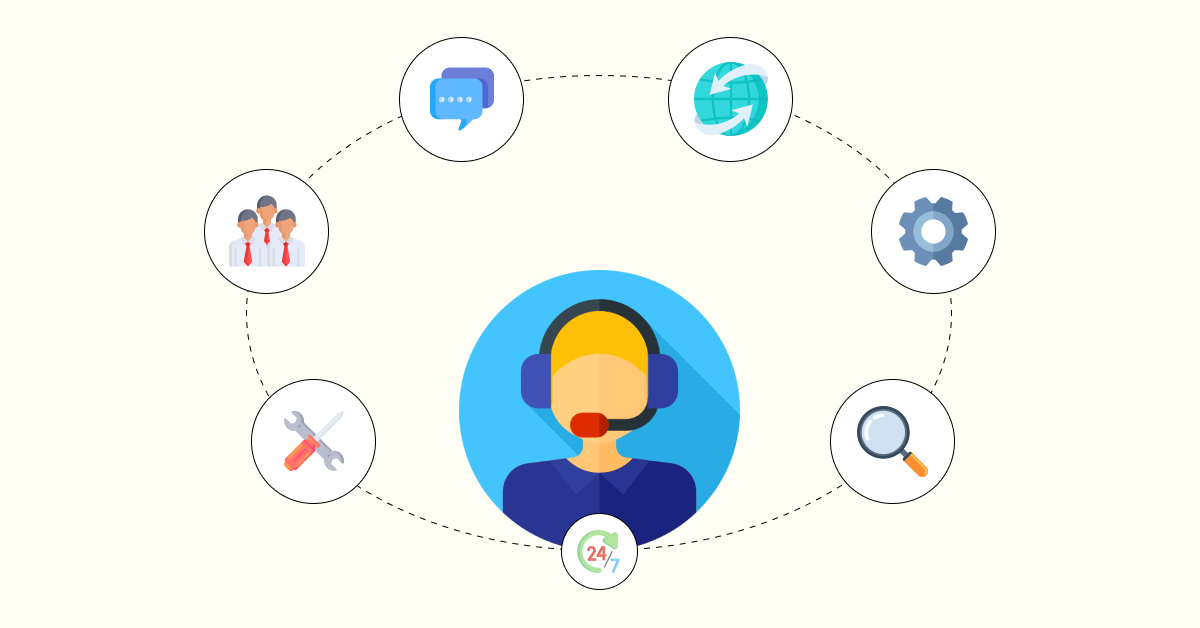Here are the differences between customer centricity and customer service:
1. Company-Wide & Department-Specific
Customer centricity requires buy-in from every department in the company, while customer service typically falls under the responsibility of a specific department, such as the customer service team.
2. Strategy vs. Tactic
When it comes to customer centricity, it has a strategic approach that guides overall business decisions. However, customer service is more tactical and focuses on implementing specific solutions for customer problems.
3. Customer Centricity is a Mindset, Customer Service is a Function
Customer centricity is a mindset that permeates every aspect of a business, from product development to marketing to customer service. Customer service is a specific function within a business that deals with handling customer inquiries and issues.
4. Customer Centricity Drives Innovation, Customer Service Implements Solutions
Driving innovation is the theme of customer centricity and focuses on creating products/services that meet customer preferences. Customer service is more about being responsible for implementing solutions to address customer issues and problems.
5. Customer Centricity is Customer-Focused, Customer Service is Task-Focused
Consumer comes first and will always be the epicenter for customer centricity, while customer service is focused on specific tasks as well as activities related to addressing customer inquiries.
Examples of Companies with Customer Centricity Behaviour
While many companies claim to be customer-centric, there are some that truly stand out for their dedication to putting the customer first.
1. Hilton Hotels
Hilton is known for its exceptional customer service and personalized experience for guests. From the moment a customer makes a reservation to their stay at a Hilton property, the staff goes above and beyond to ensure that every need is met. Hilton has also invested in technology to enhance the guest experience, such as digital check-in and customizable room preferences.
2. Patagonia
Patagonia is a well-known outdoor apparel company that is committed to sustainability and ethical business practices. Not only does Patagonia create high-quality products for its customers, but it also educates them on environmental issues and encourages them to make a difference. Prioritizing the needs of its customers, Patagonia has built a loyal following of environmentally-conscious consumers.
3. Fenty
Fenty, the beauty and fashion brand founded by Rihanna, has gained a reputation for its inclusive approach to beauty. Fenty offers a wide range of makeup products that cater to diverse skin tones, which has resonated with customers who have struggled to find suitable products in the past. Fenty has set itself apart in the beauty industry by listening to the needs of its customers and prioritizing inclusivity.
4. IKEA
IKEA is known for its affordable furniture and home decor products, but it also prioritizes customer experience in its store design as well as online shopping experience. IKEA has a customer-centric approach to product development with a focus on creating solutions that meet the needs of its customers. IKEA also offers services such as home delivery and assembly to make the shopping experience more convenient for customers.
5. Nordstrom
Nordstrom is a department store chain that is renowned for its exceptional customer service. Nordstrom empowers its employees to take ownership of customer interactions and go the extra mile to ensure customer satisfaction. Whether it’s offering personalized styling advice or providing hassle-free returns, Nordstrom consistently puts its customers first.
Adopt a Customer-Centricity Culture to Scale your Sales
A customer-centric approach builds a positive relationship between businesses as well as their customers, leading to long-term partnerships and a strong brand reputation. Customer feedback is invaluable for business growth and improvement, while businesses that prioritize customer-centricity are more likely to succeed in the long run.
Embracing a user-centric culture not only benefits the business but also creates a positive work environment for employees. When employees are aligned with the company’s customer-focused objectives, they are more motivated and engaged in their roles. It also leads to higher productivity as well as overall success for the organization.
In conclusion, adopting a customer-centric culture is not just a trend but a strategic necessity for businesses looking to thrive in today’s customer-driven marketplace.










